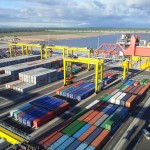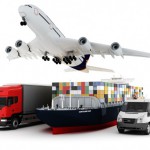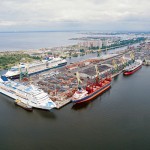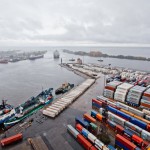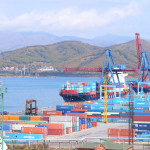 In January-July 2016, Russian seaports handled 406.18 mln t of cargo (+5.8%, year-on-year), says the press center of Association of Commercial Sea Ports.
In January-July 2016, Russian seaports handled 406.18 mln t of cargo (+5.8%, year-on-year), says the press center of Association of Commercial Sea Ports.
Transshipment of dry bulk cargo totaled 186.49 mln t (+9.4%), liquid bulk cargo increased by 3% to 219.69 mln t.
The ports of the Baltic Basin handled 135.78 mln t (+2.1%) including 50.75 mln t of dry cargo (+0.9%) and 85.03 mln t of liquid bulk cargo (+2.9%).
Throughput of Azov – Black Sea ports climbed to 134.8 mln t (+4.8%) including 55.5 mln t of dry cargo (+14%) and 79.2 mln t of liquid bulk cargo (-0.7%).
The ports of Far East Basin handled 106.81 mln t (+9.2%) including 63.5 mln t of dry cargo (+15%) and 43.2 mln t of liquid bulk cargo (+2%).
Operators of the Arctic Basin terminals handled 25.5 mln t of cargo (+25.9%, year-on-year) including 14.9 mln t of dry cargo (+8%) and 10.5 mln t of liquid bulk cargo (+66%).
The ports of the Caspian Basin handled 3.29 mln t of cargo (-21.1%) including 1.68 mln t of liquid bulk cargo (-25.5%) and 1.59 mln t of dry cargo (-15.9%).
The proportion of the Baltic Basin ports in the structure of freight turnover of the Russian seaports is 33.4%, Azov – Black Sea ports – 33.2%, Far East Basin – 26.3%.
Association of Commercial Sea Ports (ASOP) set up in 1987 unites over 50 organizations and enterprises of Russia’s maritime transport. ASOP comprises commercial seaports, forwarding and agency companies, scientific research institutes and marine educational institutions. Operational results of Russian port sector are based on statistics reports and cover all stevedoring companies operating in the Russian Federation.
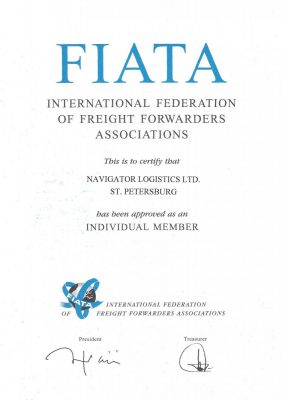
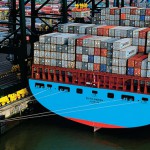 In January-June 2016, Russian seaports handled 344.6 mln t of cargo (+6%, year-on-year), says the press center of Association of Commercial Sea Ports.
In January-June 2016, Russian seaports handled 344.6 mln t of cargo (+6%, year-on-year), says the press center of Association of Commercial Sea Ports.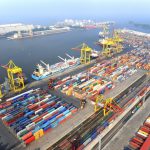 Ust Luga Container Terminal became the first Russian container terminal to introduce a technology of electronic approval of requests for admission to the border control zone. Reported on the web site of the company.
Ust Luga Container Terminal became the first Russian container terminal to introduce a technology of electronic approval of requests for admission to the border control zone. Reported on the web site of the company.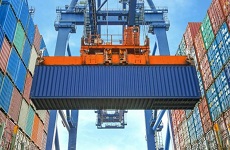 The Maritime Safety Committee (MSC), at its ninety-fourth session in November 2014, adopted, inter alia, amendments to SOLAS regulation VI/2, to require the mandatory verification of the gross mass of packed containers. This requirement enters into force today, July 1, 2016.
The Maritime Safety Committee (MSC), at its ninety-fourth session in November 2014, adopted, inter alia, amendments to SOLAS regulation VI/2, to require the mandatory verification of the gross mass of packed containers. This requirement enters into force today, July 1, 2016.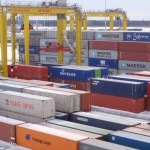 In January-May 2016, Russian seaports handled 286.3 mln t of cargo (+5.9%, year-on-year), says the press center of Association of Commercial Sea Ports.
In January-May 2016, Russian seaports handled 286.3 mln t of cargo (+5.9%, year-on-year), says the press center of Association of Commercial Sea Ports.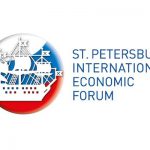 The keynote of the XX St. Petersburg International Economic Forum (SPIEF) was the striving to lift the economy out of crisis by means of a technological breakthrough and structural changes. Oil and gas companies asserted a high profitability of Arctic projects while railway companies promised to complete all the projects with the priority put on the approaches to the ports of the Southern Basin.
The keynote of the XX St. Petersburg International Economic Forum (SPIEF) was the striving to lift the economy out of crisis by means of a technological breakthrough and structural changes. Oil and gas companies asserted a high profitability of Arctic projects while railway companies promised to complete all the projects with the priority put on the approaches to the ports of the Southern Basin.